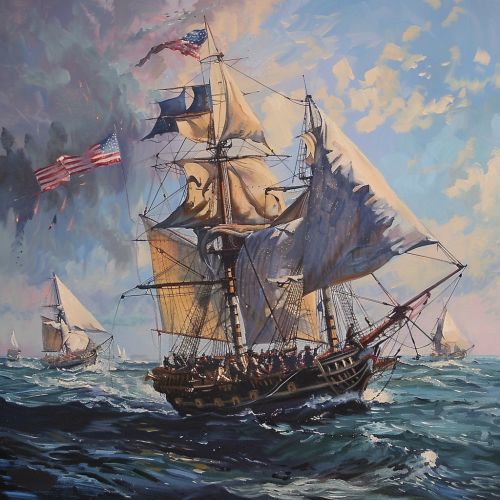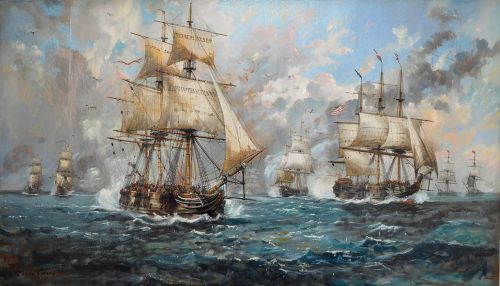History of the United States Navy
Early History
The United States Navy traces its origins to the Continental Navy, which was established during the American Revolutionary War in 1775. The Continental Congress authorized the creation of a small fleet to challenge British naval dominance. The Continental Navy played a crucial role in disrupting British supply lines and securing French support, which was instrumental in the American victory.


After the war, the Continental Navy was disbanded, and the United States had no formal naval force. However, the need for a navy became apparent due to threats from the Barbary pirates and other maritime challenges. In 1794, Congress passed the Naval Act of 1794, authorizing the construction of six frigates, which marked the birth of the modern United States Navy.
19th Century Developments
The early 19th century saw the United States Navy involved in several key conflicts, including the Quasi-War with France (1798-1800) and the First Barbary War (1801-1805). These engagements demonstrated the importance of a strong naval presence in protecting American interests abroad.
During the War of 1812, the United States Navy achieved notable victories against the British Royal Navy, including the famous battles of the USS Constitution ("Old Ironsides") against HMS Guerriere and HMS Java. These successes boosted American morale and established the Navy's reputation as a formidable fighting force.
The mid-19th century saw significant technological advancements, such as the transition from sail to steam power and the introduction of ironclad warships. The American Civil War (1861-1865) was a pivotal period for the Navy, which played a crucial role in blockading Confederate ports and controlling the Mississippi River. The famous clash between the ironclads USS Monitor and CSS Virginia marked a turning point in naval warfare.
Expansion and Modernization
In the late 19th and early 20th centuries, the United States Navy underwent a period of rapid expansion and modernization. The Spanish-American War of 1898 highlighted the need for a powerful navy to project American influence overseas. The victory over Spain resulted in the acquisition of territories such as Puerto Rico, Guam, and the Philippines, further extending the Navy's reach.
The early 20th century saw the construction of the "Great White Fleet," a group of battleships that showcased American naval power on a global tour from 1907 to 1909. This period also saw the development of new technologies, including submarines and aircraft, which would later play crucial roles in naval operations.
World War I and Interwar Period
During World War I, the United States Navy played a vital role in securing the Atlantic Ocean and ensuring the safe passage of troops and supplies to Europe. The Navy's convoy system helped mitigate the threat posed by German U-boats, contributing to the Allied victory.
The interwar period was marked by significant advancements in naval aviation and the development of aircraft carriers. The Washington Naval Treaty of 1922 aimed to limit naval armaments and prevent an arms race, but technological innovations continued to shape the future of naval warfare.
World War II
World War II was a defining moment for the United States Navy, which emerged as the most powerful naval force in the world. The attack on Pearl Harbor on December 7, 1941, propelled the United States into the war, and the Navy played a central role in the Pacific Theater.
Key battles such as the Battle of Midway, the Battle of the Coral Sea, and the Battle of Leyte Gulf demonstrated the strategic importance of aircraft carriers and naval aviation. The Navy's ability to project power across vast distances was crucial in defeating the Japanese Empire and securing victory in the Pacific.
In the Atlantic Theater, the Navy was instrumental in the Battle of the Atlantic, protecting convoys from German U-boats and ensuring the flow of supplies to Allied forces in Europe. The Navy also supported amphibious operations, including the D-Day invasion of Normandy in 1944.
Cold War Era
The post-World War II period saw the United States Navy maintaining its dominance during the Cold War. The development of nuclear-powered submarines and aircraft carriers revolutionized naval warfare. The Navy's strategic deterrent capabilities were enhanced by the deployment of ballistic missile submarines (SSBNs), which formed a critical component of the United States' nuclear triad.
The Navy was involved in several key conflicts during the Cold War, including the Korean War (1950-1953), the Vietnam War (1955-1975), and various operations in the Middle East. The Navy's ability to project power and provide rapid response capabilities was essential in maintaining global stability and deterring Soviet aggression.
Post-Cold War and 21st Century
The end of the Cold War brought new challenges and opportunities for the United States Navy. The Navy played a significant role in Operation Desert Storm (1991), demonstrating its ability to conduct large-scale operations and support coalition forces in the liberation of Kuwait.
In the 21st century, the Navy has continued to evolve, focusing on new threats such as terrorism, piracy, and cyber warfare. The Navy's role in the Global War on Terror has included operations in Afghanistan and Iraq, as well as counter-piracy efforts off the coast of Somalia.
The Navy has also embraced technological advancements, including the development of the Littoral Combat Ship (LCS) and the Gerald R. Ford-class aircraft carrier. These innovations aim to enhance the Navy's flexibility and capabilities in a rapidly changing global security environment.
See Also
- Continental Navy
- Barbary pirates
- Naval Act of 1794
- Quasi-War
- First Barbary War
- War of 1812
- American Civil War
- Spanish-American War
- Great White Fleet
- Washington Naval Treaty
- Battle of Midway
- Battle of the Atlantic
- Cold War
- Operation Desert Storm
- Global War on Terror
- Littoral Combat Ship
- Gerald R. Ford-class aircraft carrier
